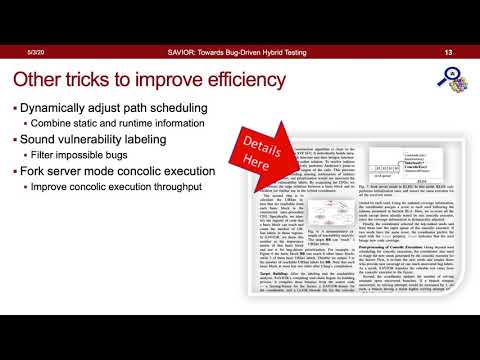Description:
Explore a cutting-edge approach to hybrid testing in software development through this IEEE conference talk. Dive into the concept of bug-driven hybrid fuzzing with SAVIOR, a system designed to improve upon traditional code coverage-driven methods. Learn how compile-time analysis, instrumentation, and active property checking can lead to more efficient bug detection. Discover techniques for optimizing resource distribution and path scheduling by combining static and runtime information. Examine the evaluation results of SAVIOR on LAVA-M benchmark and real-world programs, including its performance in triggering UBSAN violations. Gain insights into the potential of bug-to-code ratios for enhancing testing effectiveness and understand how this approach compares to conventional code coverage methods.

SAVIOR: Towards Bug-Driven Hybrid Testing
Add to list